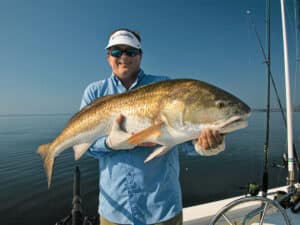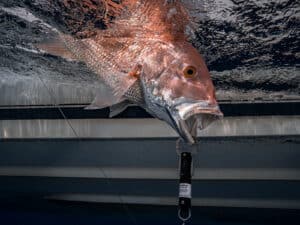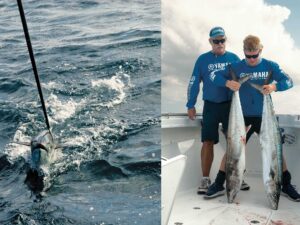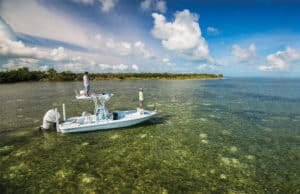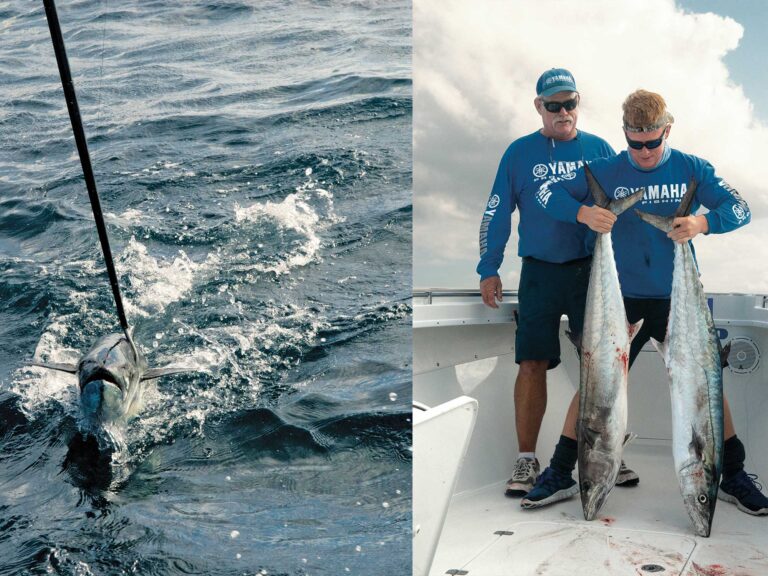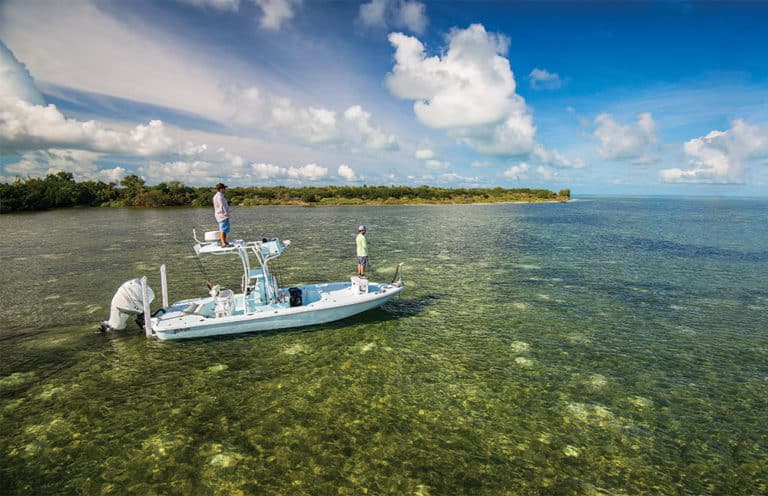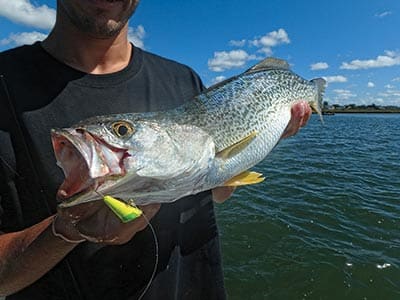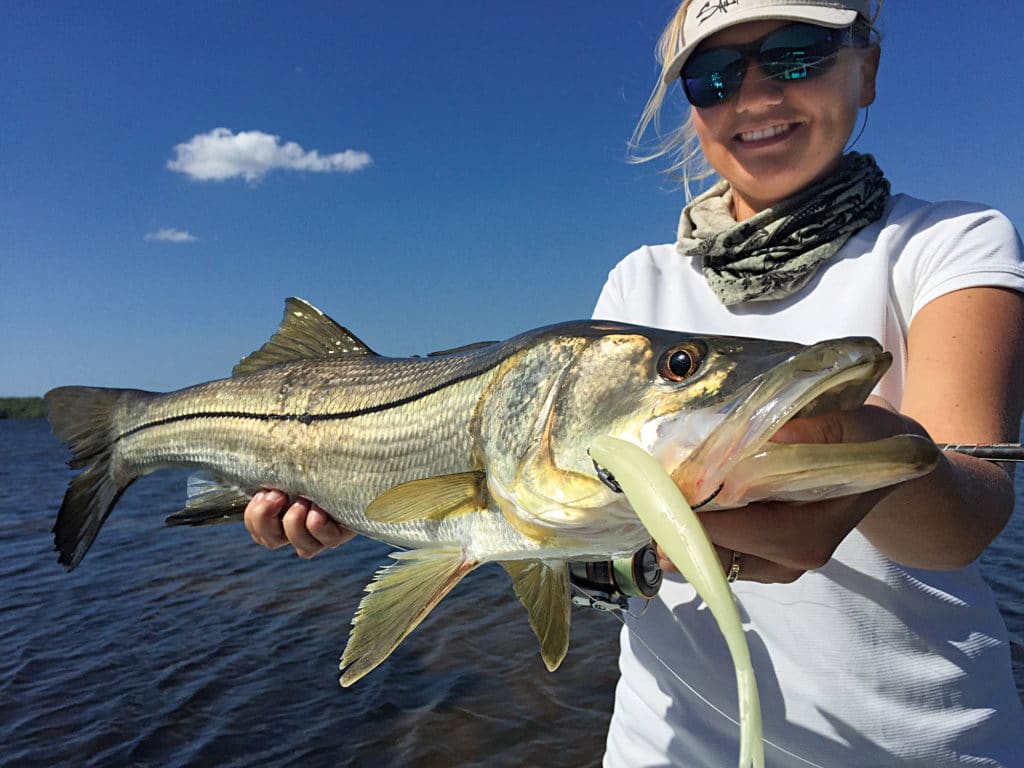
“Whoa, did you see that big mama?” asks an excited Capt. Dan Clymer as we both stare at the giant swirl left on the surface where a trophy-size snook had just swiped at a plug, completely missing the hooks.
“Oh well, they don’t get that big by being dumb,” adds Clymer, a full-time guide and native of nearby Homosassa who told me the snook population was thriving in Florida’s Nature Coast. A bit too far north for that to happen, I thought, so I had to see for myself. And here we were — in search of big snook — plugging our way along the dredged canal leading to the Crystal River power plant on Florida’s Gulf coast.
We had boated two respectable fish that morning before the rumble of thunderheads forced us into more sheltered waters. “We can slog out here. There’s always protection, even on bad days, no matter the wind direction,” Clymer explains. “This is where I’ve caught most of my big snook. The water is deeper and there’s plenty of bait, so you can see why big snook like it so much.”
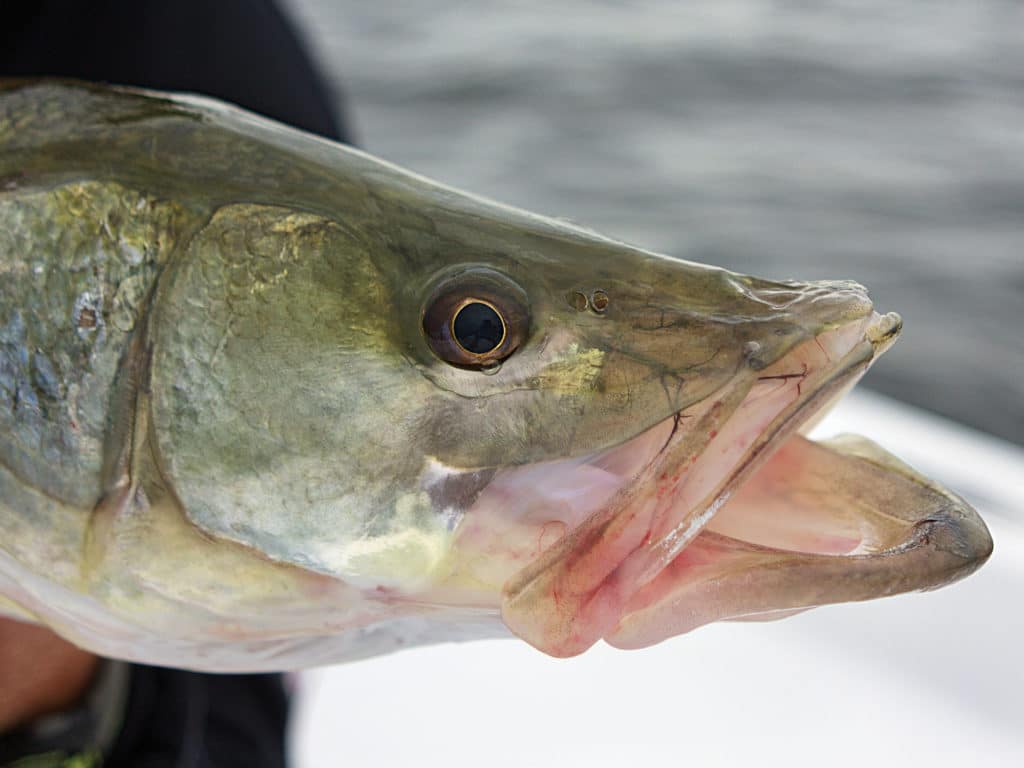
POPULATION BOOM
“I caught my first one on New Year’s Eve in 1990, and the snook population has really expanded since then,” Clymer says. “I’m convinced they’re spawning here too. I’ve seen fish ranging from 6 inches to 4 feet, and 6-inchers aren’t swimming all the way up here from Sarasota or Tampa Bay. This fishery is now so good that I can target snook specifically and expect to be successful.”
On his best day, Clymer claims he caught 44 snook on 44 casts, all around the 20-inch mark, which bodes well for the future of the fishery. But he has also landed one measuring 46 inches and pushing 30 pounds, so not all the linesiders in the area are juveniles; there are also some extra-large grown-ups lurking around.
Florida’s snook, which are very sensitive to the cold, were caught only sporadically throughout the Nature Coast until recently. But it appears the fish have been gradually migrating farther up the Gulf Coast from their traditional northernmost haunts in the Tampa/St. Petersburg region. Surely, mild winters the past couple of years have contributed to the movement, but the numerous springs around Crystal River and Homosassa, which guarantee mild-water sanctuary during the occasional arctic blasts, are another likely factor.
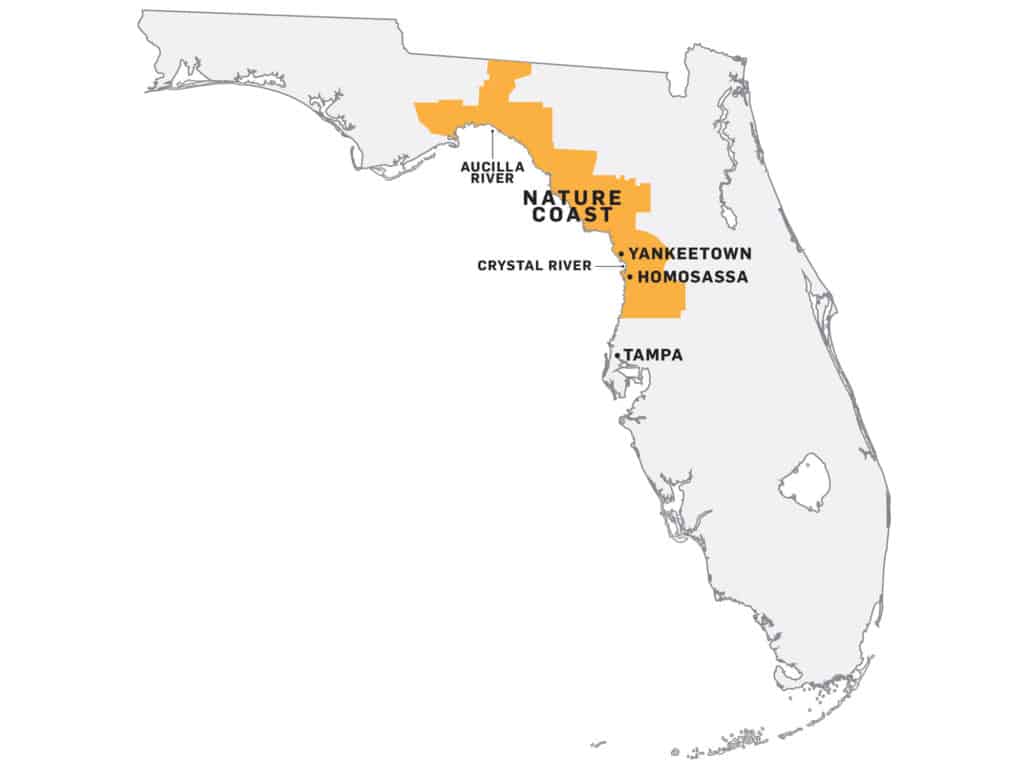
BAIT SELECTION
Of course, there’s no shortage of forage along Florida’s Nature Coast where snook easily find lots of shrimp, pilchards, mullet and other baitfish to slurp down. “They go absolutely crazy over needlefish,” Clymer says, but rather than pitch live baits, he prefers to toss artificials to snook using light spinning tackle. His top lure choice is a D.O.A. 5.5 C.A.L. soft-plastic jerkbait in Glow — which passes for a needlefish — rigged through the nose on a live-bait hook and worked just below the surface. Other favorite offerings include hard-plastic twitchbaits, like the Unfair Lures Rip-n-Slash, MirrOlure MirrOdine and Yo-Zuri Mag Darter, in natural colors.
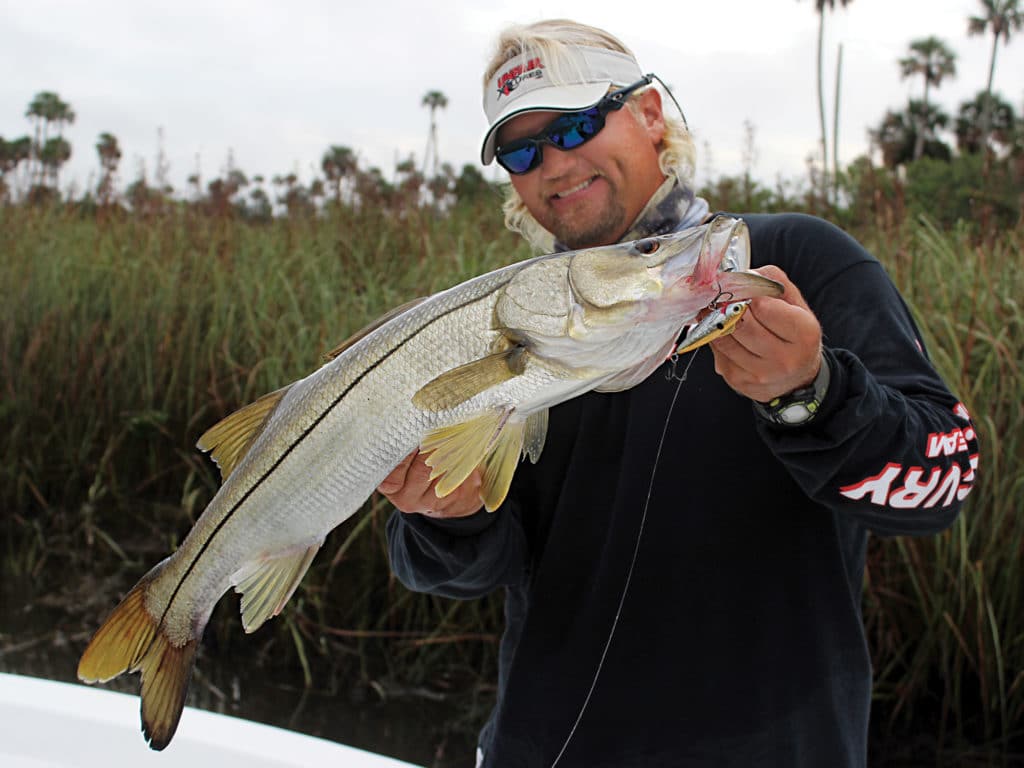
LIGHT RIGS AND LOOPS
Clymer spools 10-pound braid on his reels, then splices a section of 30-pound fluorocarbon leader with double uni-knots. All the lures are attached with a MirrOlure loop knot. “I tie everything on with a loop knot,” Clymer explains. “The loop improves the action of the lures, and I firmly believe you get more bites.”
LINESIDER HANGOUTS
When targeting linesiders, Clymer focuses on boat docks and rocky flats with deep swashes or nearby channels that the fish are able to drop into during low tides while waiting for rising water to return to their usual hangouts. The downtide side of oyster bars are also prime areas to prospect. The fish lie into the current, waiting to ambush prey swept by the tide.
According to Clymer, the best snook action often takes place during outgoing tides. The Crystal River guide prefers major moon phases, although he says that’s not as critical as the amount of water moving. The bite is also typically better on weekdays when there is less boat traffic to disturb the wary fish.
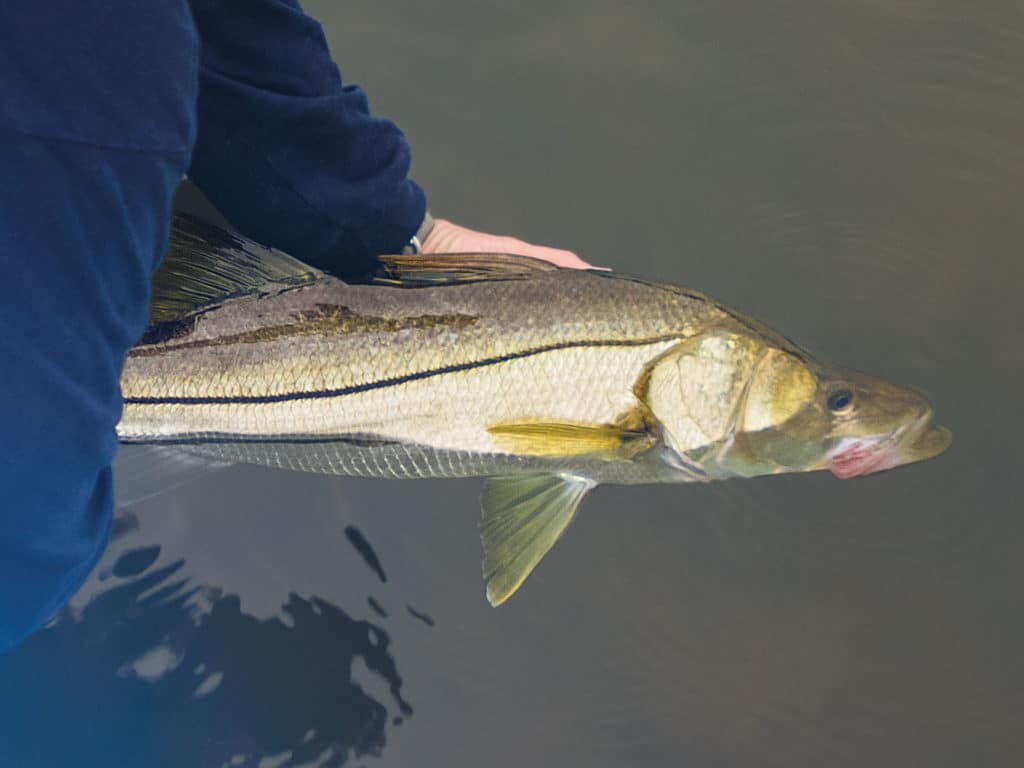
SEASONAL MOVES
Snook’s preferred water temperature range is 70 to 85 degrees. Spring through fall, when the water is warmer, is prime along the barrier islands, flats, creeks and tidal rivers. From November through February, snook move into the springs where the water remains a consistent 72 degrees. The fish aren’t as active then, but they still eat between high-pressure systems. Clymer finds trolling Yo-Zuri Crystal Minnows (with red heads and white bodies) about 100 feet behind the boat at 3.5 mph often triggers strikes during the winter months.
Every few years, especially after back-to-back warm winters, a few snook are caught even farther north. In fact, one was landed in the Aucilla River, more than 100 miles north of Crystal River. But it’s a rarity. “I’m not sure if it’s because of global warming or what,” Clymer wonders. “All I know is my home waters now offer access to trophy snook on a daily basis.”
SNOOK FACTS
There are four snook species in Florida. The common snook is the most widespread and also the one that attains the largest size (20-pounders are considered trophies, but some exceed 50 pounds). Snook season along Florida’s Gulf coast closes from December 1 through the end of February and again May 1 through the end of August. Snook were granted game-fish status (no sale allowed) in Florida in 1957, and an annual $10 permit is required to keep one fish per day. In the Gulf snook-management zone (including Monroe County), only fish between 28 and 33 inches in length may be kept.
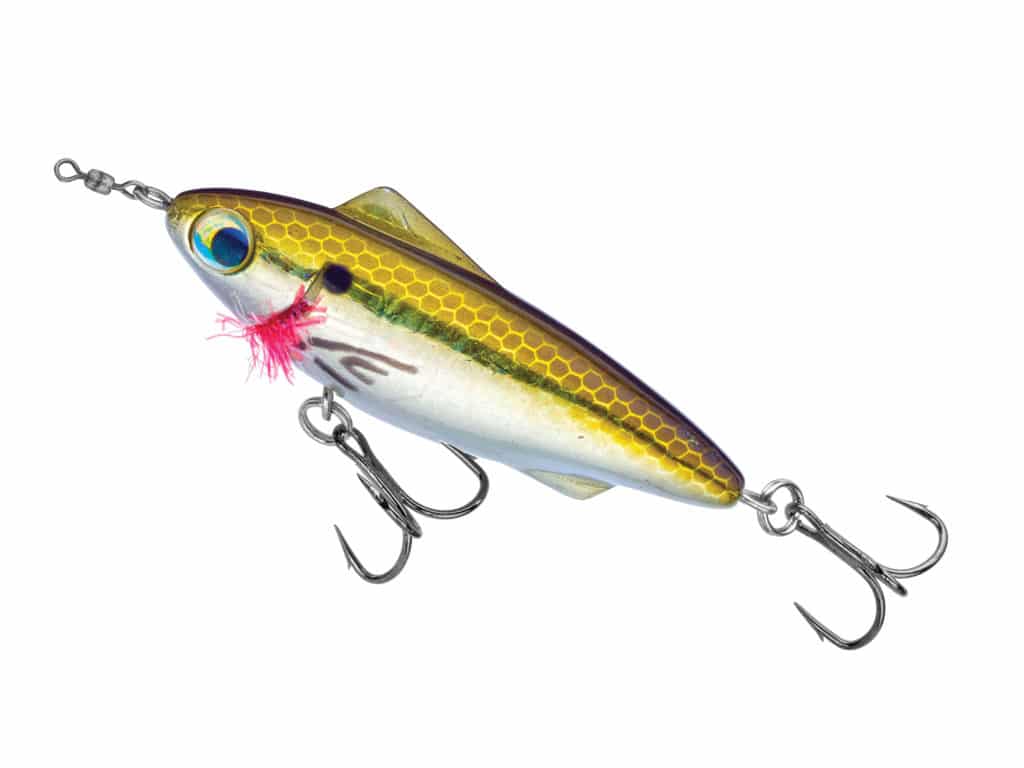
Unfair Lures 70 MM Rip-N-Splash
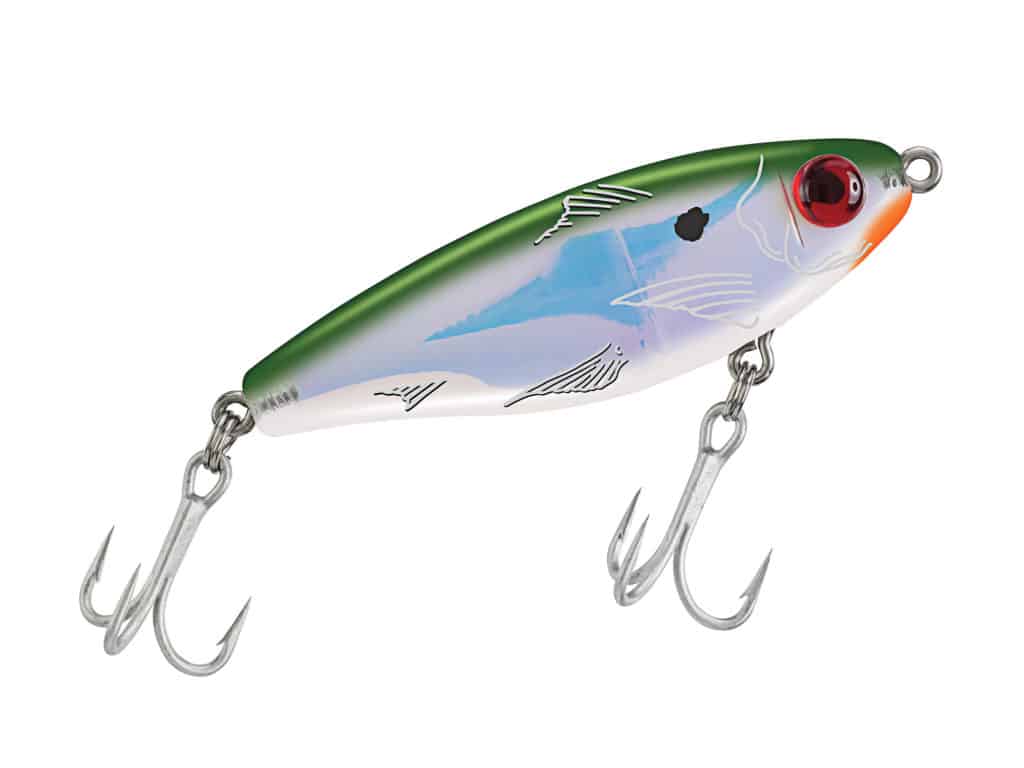
Mirrolure Mirrodine XL
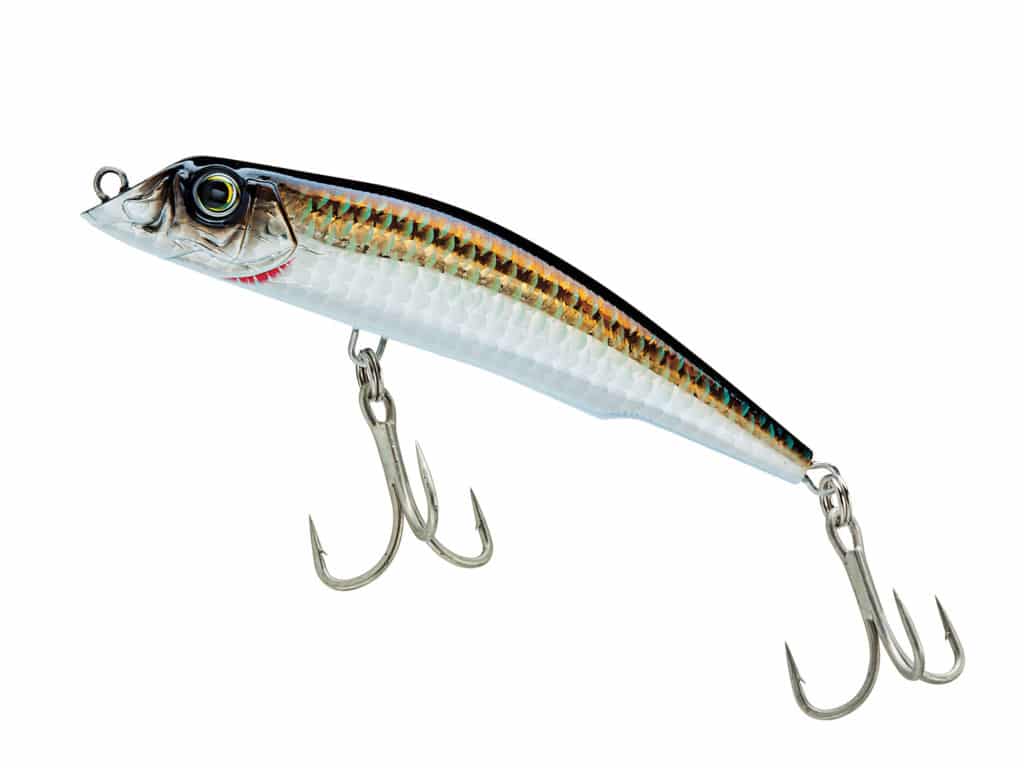
Yo-Zuri Mag Darter
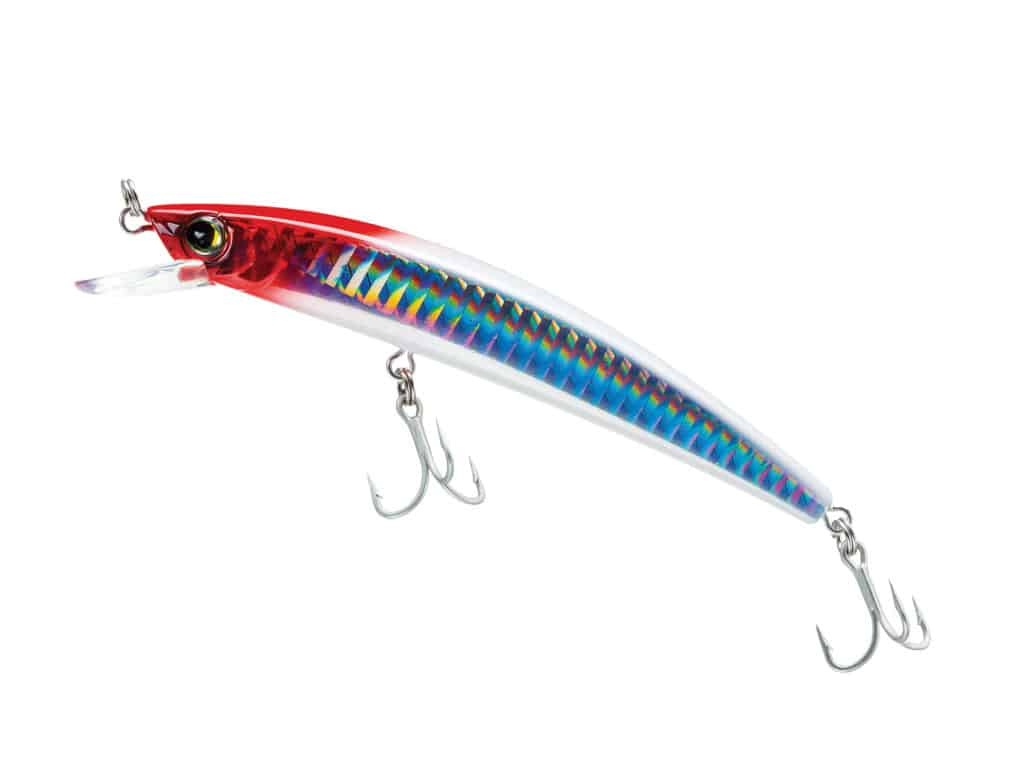
Yo-Zuri Crystal Minnow
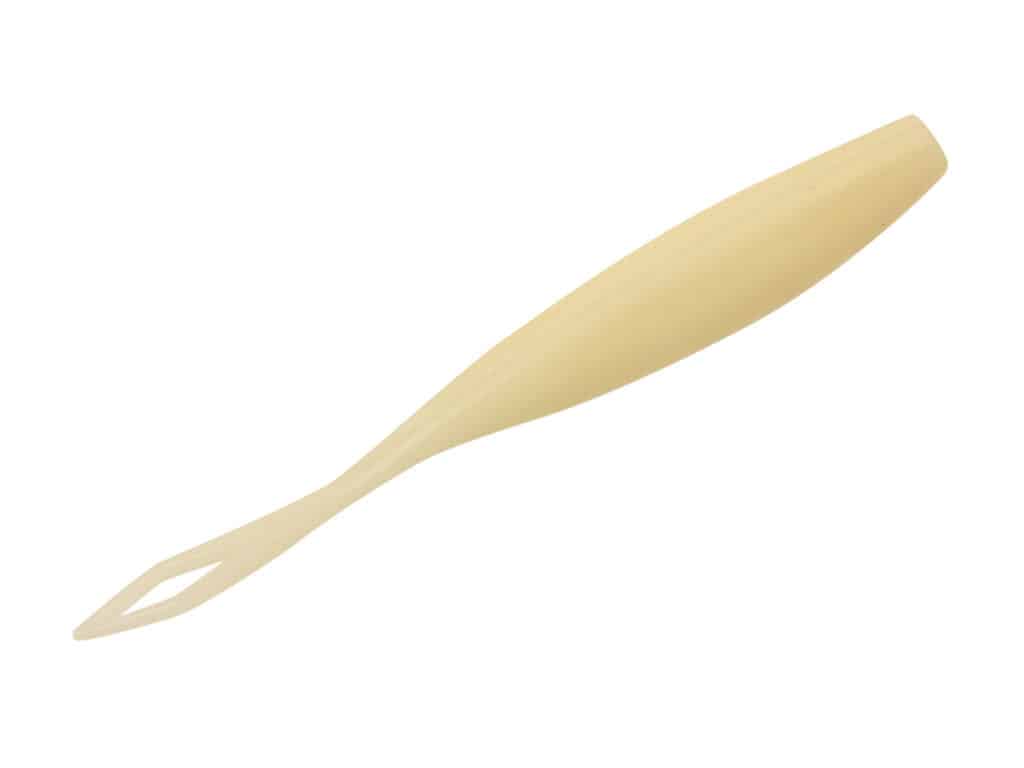
D.O.A. 5.5 C.A.L. Glow Jerkbait
SWS PLANNER
Gulf Coast snook
What: Florida common snook
When: Year-round, with winter action limited to area springs and rivers
Where: Florida’s Nature Coast (Homosassa, Ozello, Crystal River and Yankeetown)
Who: Anglers on shallow-draft center consoles, bay boats and skiffs. Knowledge of the area is a big help. The following guides offer results while you gain the experience to go it alone:
Capt. Dan Clymer 352-418-2160 crystalriver-fishing.com
Capt. William Toney 352-422-4141 homosassainshorefishing.com
Capt. Clay Shidler 352-586-2748 hangemhighsportfishing.com
SWS TACKLE BOX
Gulf Coast snook
Rods: 71⁄2-foot medium-action spinning or baitcasting, like the G. Loomis E6X Inshore series
Reels: 3000- to 4000-class spinning or 200-class baitcasting
Line: 10-pound aqua-green braid or similar
Leader: 30-pound fluorocarbon; 40-pound around docks and similar structure
Lures: Glow-color D.O.A. 5.5 C.A.L. jerkbait rigged through the nose with a 3/0 short-shank live-bait hook; Unfair Lures 70 mm Rip-n-Slash, MirrOlure MirrOdine and Yo-Zuri Mag Darter suspending plugs in natural color schemes like green-and-olive or black-and-silver
Baits: Live pilchards, threadfin herring, finger mullet, needlefish and large shrimp

